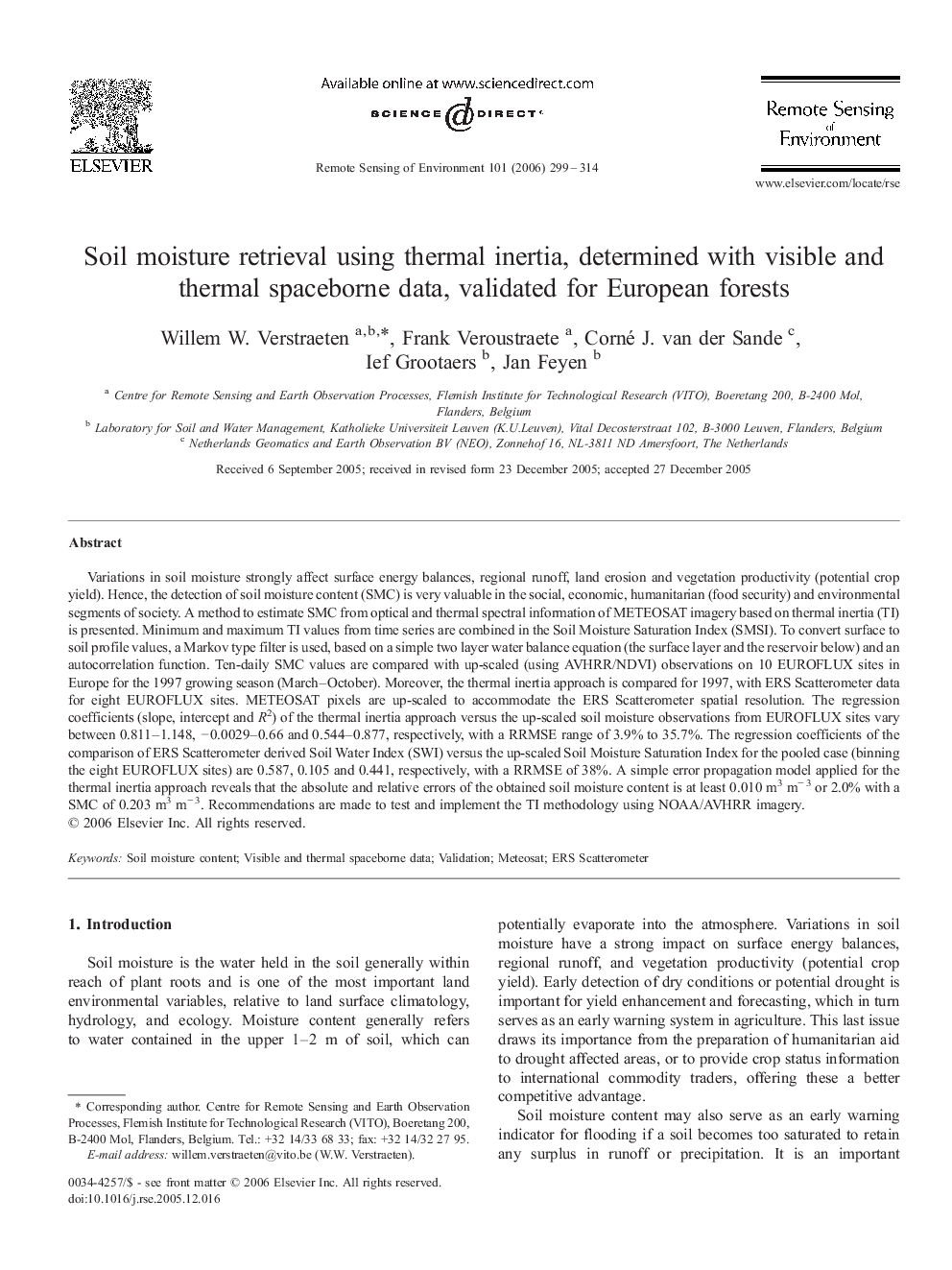| کد مقاله | کد نشریه | سال انتشار | مقاله انگلیسی | نسخه تمام متن |
|---|---|---|---|---|
| 4461092 | 1621371 | 2006 | 16 صفحه PDF | دانلود رایگان |

Variations in soil moisture strongly affect surface energy balances, regional runoff, land erosion and vegetation productivity (potential crop yield). Hence, the detection of soil moisture content (SMC) is very valuable in the social, economic, humanitarian (food security) and environmental segments of society. A method to estimate SMC from optical and thermal spectral information of METEOSAT imagery based on thermal inertia (TI) is presented. Minimum and maximum TI values from time series are combined in the Soil Moisture Saturation Index (SMSI). To convert surface to soil profile values, a Markov type filter is used, based on a simple two layer water balance equation (the surface layer and the reservoir below) and an autocorrelation function. Ten-daily SMC values are compared with up-scaled (using AVHRR/NDVI) observations on 10 EUROFLUX sites in Europe for the 1997 growing season (March–October). Moreover, the thermal inertia approach is compared for 1997, with ERS Scatterometer data for eight EUROFLUX sites. METEOSAT pixels are up-scaled to accommodate the ERS Scatterometer spatial resolution. The regression coefficients (slope, intercept and R2) of the thermal inertia approach versus the up-scaled soil moisture observations from EUROFLUX sites vary between 0.811–1.148, − 0.0029–0.66 and 0.544–0.877, respectively, with a RRMSE range of 3.9% to 35.7%. The regression coefficients of the comparison of ERS Scatterometer derived Soil Water Index (SWI) versus the up-scaled Soil Moisture Saturation Index for the pooled case (binning the eight EUROFLUX sites) are 0.587, 0.105 and 0.441, respectively, with a RRMSE of 38%. A simple error propagation model applied for the thermal inertia approach reveals that the absolute and relative errors of the obtained soil moisture content is at least 0.010 m3 m− 3 or 2.0% with a SMC of 0.203 m3 m− 3. Recommendations are made to test and implement the TI methodology using NOAA/AVHRR imagery.
Journal: Remote Sensing of Environment - Volume 101, Issue 3, 15 April 2006, Pages 299–314